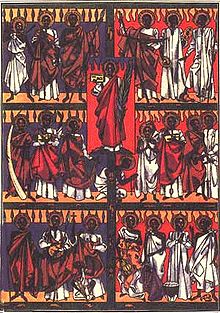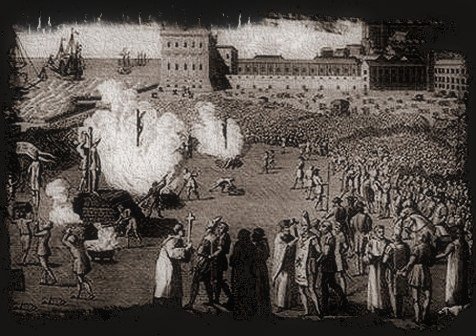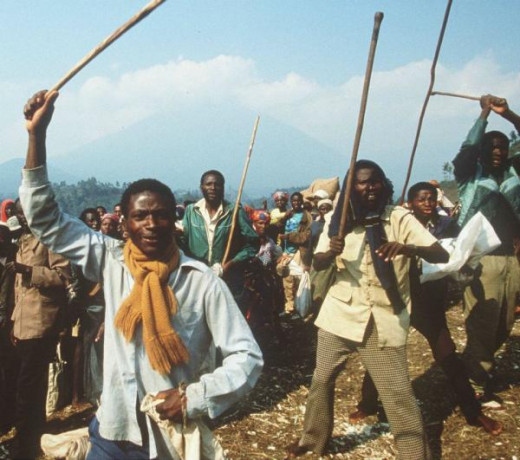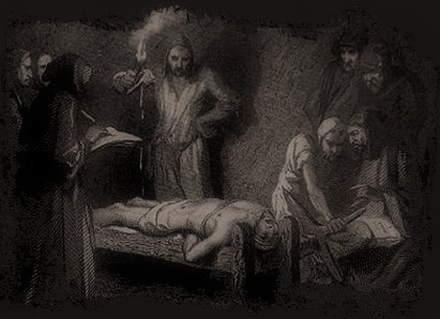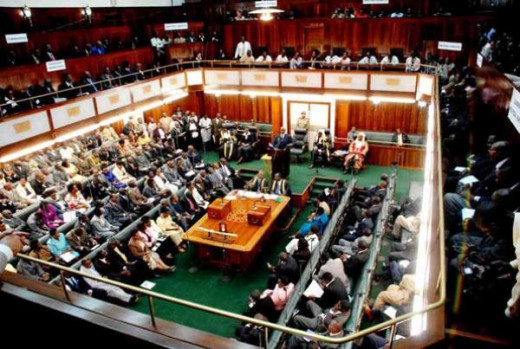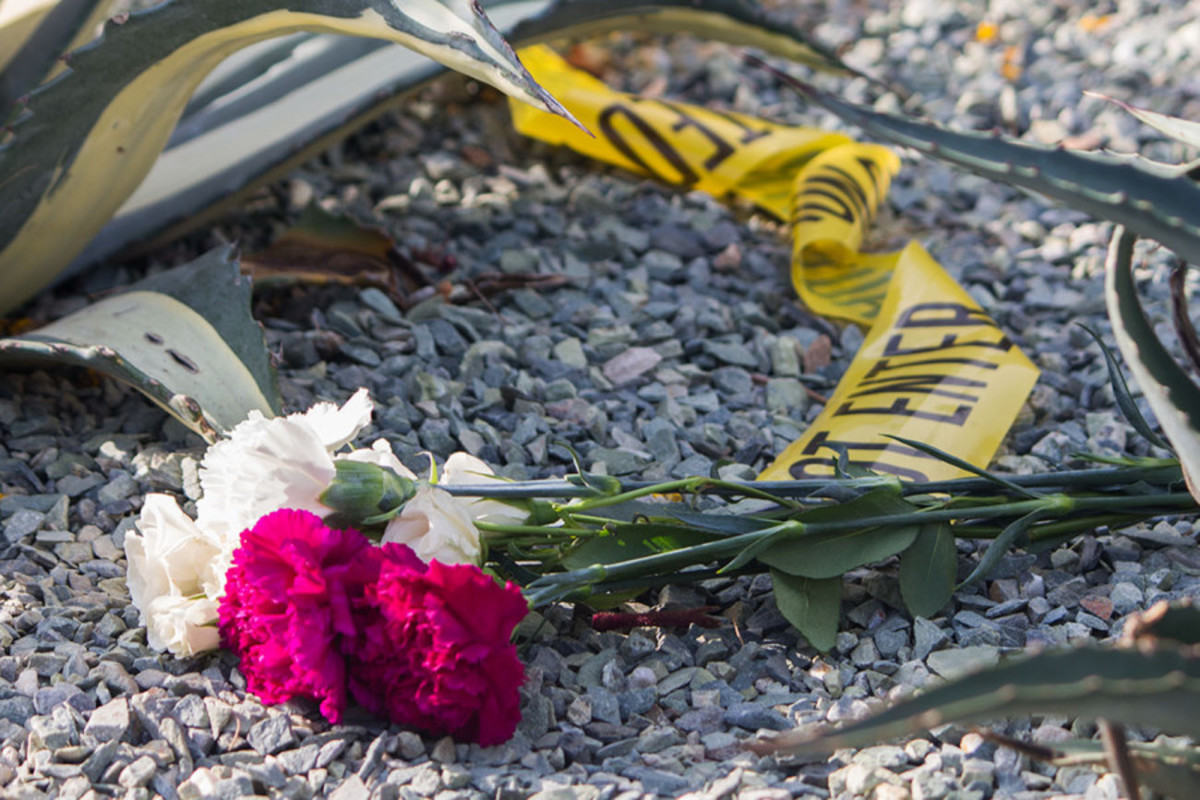- HubPages»
- Health»
- Personal Health Information & Self-Help»
- Mentally & Emotionally Balanced Living
Promoting dialogue and peaceful co-existence
Ambience

Never Again
Click thumbnail to view full-size






Contexts of murders and killings
There are situations that one would have wanted to be ideal and never bent in any way. The fact that there are those who go hungry is sickening. The fact that there are mothers who deliberately abandon their young children is so saddening. The fact that a husband can abandon wife and children is just as despicable and remorseless an act. To deprive people of clean air is very absurd. Sadly, these things are happening. Legal enforcement and common sense have tried to keep us at a gold standard, but there are those who go wayward and commit heinous acts. Some are mentally ill and are attached to clinics and homes where they receive care. Others do engage in these acts with malice or out of habit. These ones if apprehended are tried in court and given sentences commensurate to the charges.
The act of killing another person and its debate still baffles many. It is a tautology. But, one may ask what it is that motivates one to kill another? Scriptures, law and intelligentsia have given this question lip service. Not only has history recorded mass killings but even present day stories are replete with killings. The world seems to have left so much vacuum, vagueness and it appears not to strongly pronounce itself on this question. Most laws are enacted after the fact. If only to avoid restitution and reconciliation against a genocide ideology.
Humanity today has the capacity to gauge what may boil over into killings but one sees reluctance where rapid response would deter such. There are many examples of this reluctance. The Global practice is that a killing in the farthest corner of the world affects those at the center. It is an abuse against humanity. However, this is more bark than bite. This silence before a plunge is what gives room to those bent on annihilation to do as they please. There are examples of legal instruments and civil action against what would have turned into lynchings and mass killings ( Marjorie Heins, 2013: Priest of our Democracy: the Supreme Court, Academic Freedom, and the anti-Communist Purge, Gary May, 2013: Bending Towards Justice; the Voting Rights Act and the Transformation of American Democracy, Larry S. Gibson, 2012: Young Thurgood; The making of a Supreme Court Justice).
Murder is a serious crime. It is a criminal offense. Because of legal and judicial reasoning we may first go briefly through legal codes of humankind in order to define it. Two examples of written codes that come to mind will be my concentration.
This is not to say that there were no other legal codes in the world. Oral Africa passed down its norms and lore by word of mouth. Other cultures may have used writing or a form of inscription. The Greeks, Romans and Persians must have learned from Phoenicians who in turn recycled materials from the Near East. The Near East learned from Babylon where the Hammurabi laws that called for an eye for eye and ear for ear originated. Today as much as at the times around 1700 BCE, the presumption of innocence is a principle and legal right that cannot be denied the accused. In rendering due diligence the accuser has same privilege like the accused. The burden of proof is on the accuser to compile enough compelling evidence to pin down the accused. The accuser then engages in efforts (with the help of a prosecutor) to gather evidence that is hard, admissible, actual and lawfully obtained. The trial must be fair, speedy, conducted with a jury and a counsel.
The Universal Declaration of Human Rights, article 11 states that: “Every one charged with a penal offense has the right to be presumed innocent until proven guilty according to law in a public trial where she/he has had all guarantees for her/his defence.” In modern practice, social ills, social status, sex, gender, class, ethnicity, economic or political standing over those of others regardless of circumstances may influence handling and outcome of many cases.
Having seen the circumstances in which legal practice prevails, can we then define murder. Murder is the unlawful killing of another with malice aforethought. In using malice aforethought the legal mechanism refers to the recklessness, level of intent, premeditation, planning that goes into the act and other killings on record. That way a punishment is meted out after weighing the case.
Murder can be defined in four phases:
1. intentional murder 2. a killing that resulted from intent to do seriously bodily harm 3. a killing that occurred from a depraved heart of extreme recklessness 4. murder committed by an accomplice, during the commission, attempt of, or flight from certain felonies (LaFave, Wayne R. 2000. Criminal Law 3d ed. St. Paul, Minn.: West Group). The law provides defense to a murder charge. Three most important examples are self defense, insanity and where a juvenile under 14 years is concerned. However the Juvenile Justice System is now trying 14-15 year old as adults. These may serve sentences for life even if they turned 21 years and above.
Mass murders and serial killings are tragedies that sadly continue occurring in society. The motive is a desire to satisfy a delusional personal need. This kind of person is a sociopath who gets satisfaction in use of brute physical force, may suffer from heamatomania and enjoys killing. Mass murderers are motivated by terror, revenge, power or profit (Fox, James Alan, and Jack Levin. 1998. "Multiple Homicide: Patterns of Serial and Mass Murder.” Crime and Justice). Killings have occurred around the world and still occur to this date. This is in form of guerrilla war fare, rebel activities, hate crimes, lynchings and terrorism
Europe faced tumultuous periods. This was between 1100-1700 AD. The years 1400-1700 AD saw big numbers of people labeled as witches convicted, burned at the stake or hanged. In actual fact Europe saw seven forms of events unfold.
All of the seven involved large numbers killed. A carry over tendency from the Roman Empire days was passed on to next generations. It still occurred many years after the fall of the Roman Empire.
The second event was the Catholic Church's role in killing of witches. This was made legal after the 1244 Council of Harbonne that decreed sparing no one who had a personal view of God other than that of the Church.
The third event was the killings that took place in form of full fledged battles in Central Europe following the reformation.
The forth event was when diseases, famine and plague killed many Europeans. The Black death of 1300 AD was thought to have been a curse brought on by witches. There was retaliation borne out of hysteria (Witchcraft in Europe 1100-1700 AD:A Documentary History, Alan C. Kors and Edward Peters, Univ. of Penn. Press).
The fifth event of killings occurred when United Kingdom in 1558 established the Church Of England. There followed a forced emigration of Catholic believers from England, Wales and Scotland to countries where Catholicism was practiced. Those who did not convert and stayed were killed.
The six form of event was the inhumane treatment of women which was justified by the Church. Women could be killed on flimsy excuses. Even the greatest philosophers then including Martin Luther King and Thomas Aquinas wrote lengthy treatises demeaning women. St Thomas Aquinas suggested that 'God made a mistake in creating women.' The Lutherans at Wittenberg debated 'whether women were human beings at all.' 'If women become tired or even die, that does not matter.Let them die in childbirth, that is why they are there.' Martin Luther (1483-1546)
The seventh event was during the thirty year war that followed the Reformation. This was resolved when the Peace of Westphalia was agreed upon and it was agreed that earlier agreements come into effect. It was agreed that Europe would practice Roman Catholicism, Lutheranism and Calvinism. However, this was followed by further splits. One contentious issue was allowing of Protestants to invest money and accumulate riches. The austere churches cautioned against this kind of teaching. It was a recipe for further split. Church of England was formed around this time and strengthened under Queen Elizabeth I.
Queen Elizabeth I, had a long prosperous reign. It helped the Church to prosper. It also helped cast the position of women in a better light. Through her example and that of other women in leadership positions, wit, judgment and leadership men across Europe changed their perception of women. Women took on leadership roles. Elsewhere too Europe had women rulers, educationists and social reformers. Austria, France and Spain had women in Palaces and Courts. Russia had a female Czarina around this time.
The Americas experienced mass killings too. The Aztec Empire and its human sacrificing cult is one such example. In the United States the 'Burning Times' of the mid 20th Century is another example.
Africa has had its share of events where mass killings or deaths occurred. Slave Trade, colonial resistance wars, genocide and witch hunts. Superstition and political motivation have been behind the latter two events. Deaths in big numbers were also caused by pestilences and famine. In order to subjugate their colonies in Africa, colonialists engaged in use of brutal and lethal force that ended in maiming and mass killings. In Congo, during colonial times millions of people were killed. But sadly it did not end there. Even today, in the Congo wars and civil strife still abound.
"Between 1885 and 1908 King Leopold II of Belgium turned Congo into his private colony and was responsible for one of the most brutal forced labour systems ever known. King Leopold posed as a protector of Africans from Arab slave traders but in reality curved out an empire based on terror to harvest rubber.Local chiefs were required to supply men to collect rubber and other resources like ivory and the Congolese were obliged to supply these products without payment. Families were held hostage and starved to death if men failed to produce enough rubber, villages were burnt down and children’s hands and feet were chopped off as punishment for late deliveries or refusal to deliver.The atrocities committed by the Belgians were some of the vilest in human history. As a result ten million Congolese died through murder, starvation, flogging, mutilation and exhaustion and between 2 and 5 million were permanently mutilated.Local chiefs organized resistance which was brutally crashed. Soldiers were sent out to kill the rebels and ordered to cut off and bring back the dead victims’ right hands. Those who shot and missed their targets cut off the hands of the living to meet their quotas. In the words of Forbath a Danish missionary; ‘’The baskets of severed hands set down at the feet of the European post commanders, became the symbol of the Congo Free State….The collection of hands became an end in itself. Force Publique soldiers brought them to the stations in place of rubber, they even went out to harvest them instead of rubber….They became a sort of currency. They came to be used to make up for shortfalls in rubber quotas, to replace…the people who were demanded for the forced labour gangs, and the Force Publique soldiers were paid their bonuses on the basis of how many hands they collected,’’ (Chimp Reports, November 3 2013).
Religious Missionaries died at the hands of Africans. The Missionaries of Africa, the Jesuits and the Anglican Missionaries were killed by Africans.
Wars and Terrorism contribute to the large numbers of killings. From World wars to present day fundamentalism, the number of people brutally killed is large. The planning that went into this deliberate killing, say during WWI & WWII, is very amazing. One need only to read various texts about Hitler's meticulous plans to appreciate the sponsored annihilation (Stephen G. King(2011): Ostkrieg; Hitler's War of Extermination in the east). Military might of Hitler left atrocities, mass murders where tens of millions and Holocaust in its wake. Operation Barbarossa, had the annihilation agenda and intended to create a living space for Germans under the Lebensraum principle. The other goal of Operation Barbarossa was to resolve the 'Jewish Question.' Sadly, with technological advance and skills in warfare, terrorist attacks still occur today. Many people are killed in the attacks.
Tibet, Bhutan, Nepal and Burma have their fair share of social struggles that are yet to be resolved. International pressure and internal political organization of people are helping to make peaceful governance in these countries take root.
In the early days, conversion, emigration and the peace accord at Westphalia were some of the means through which persecution was stopped and guarantee for freedom of worship were provided.
Systems to promote quality of Life, dignity and Respect
Click thumbnail to view full-size
What has been behind killings?
1. Lack of rules and laws
2. Psychological instabilility
3. Means of subjugating others
4. Delays in executing justice leads to lynchings
5. State or religious sponsored hate crimes
What are the measures To Improve on quality of life, respect and dignity
1. The establishment of international Criminal Courts to try perpetrators.
2. The establishment of institutions to document abuses e.g. Truth and Reconciliation Committee in South Africa following 'Apartheid' regime.
3. Countries to enact and uphold laws that deter killing of humans
4. Monitoring terrorism and uprooting the fundamentalist tendencies behind it.
5. Establishing strong and enduring governments. A vacuum in Somalia has left space and opportunity for fundamentalism to take place without impediments.
6. Denunciation of gross acts against any person and upholding rule of law.
7. To establish and uphold the work of such bodies like World Economic Forum. The World Economic Forum is an independent international organization committed to improving the state of the world by engaging business, political, academic and other leaders of society to shape global, regional and industry agendas The index looks at four key areas – health (life expectancy, etc), access to education, economic participation (salaries, job type and seniority) and political engagement.
Events in which people are killed
Which of the four events contributes to victimization and mass deaths
Re-assuring tactics and non-violence in local communities in USA
Non Violence and conflict Resolution in our communities
This is what it takes:
There are pressures that people face on a daily basis. The tone, condescending attitude and acts that put one down trigger off mis-communication. There are subtle and deliberate actions that are at the back of our mind even as we speak with new people or people we do not know that well. Some of those could be driven by fear, our own lack of skills to reach out to others and the reception of the party we meet. We have a fear for the unknown or the consequences. We tend to wonder what the results will be. We are driven by the desire to perform better. Failure is scary. So, in meeting some one new we come with all these fears. Silence, indifference or ignoring them could be our reaction. This may further turn out to deny these persons a chance to talk about themselves. Having seen and known what goes on in the mind of two people or three or four, we need to reflect on this scenario. Imagine how this plays out in your situation. There are ways to avoid using anger, coldness and indifference. Use the rule of thumb: greet, adopt a genuine regard to the person's issues or points, ask simple questions like 'may I be of help?' Or you can even tone that down and ask 'how may I be of service?' The former assumes a position over the listener, yet the latter shows you are at the same level and want to reach out but only the other party has to give the go ahead.Then First and foremost do not judge another person. Secondly do not get angry. Thirdly engage the person in conversation. Fourthly share your own feelings. Fifth work out or resolve the issue on the spot.
The Five Rules to Remember When faced with discrimination and bias ridden treatment
1. First and foremost do not judge another person.
2. Secondly do not get angry.
3. Thirdly engage the person in conversation.
4. Fourthly share your own feelings.
5. Fifth work out or resolve the issue on the spot.
The Five Best Practices against Localized Racism, Discrimination and Bias ridden Tendencies
Action Benefits to the perpetrator ( Abuser)Benefits the recipient (victim of abuse)
First and foremost do not judge another person. .It helps to be clear and have perspective. Secondly do not get angry. It promotes empathy and clarity of mind. Thirdly engage the person in conversation, Identify the harm and fears. Identify harm and fears. Fourthly share your own feelings. Share the impact of harm to you as a human being. This allows sensitivity to be shared as well as responsibility. Fifth work out or resolve the issue on the spot. Commit to non-violence processing and emphasize non re-occurrence/ non recidivism. Elicit commitment to non re-occurrence through non aggression or retribution
Laws will stop Racist Tendencies
Does it also require human effort to question racist and supremacist tendencies?
- Yes. (Imagine what this answer impacts on your efforts towards non violence and tolerance)
- No ( Imagine like above)
- May be ( Imagine what this answer does to your commitment efforts to non violence and tolerance).


